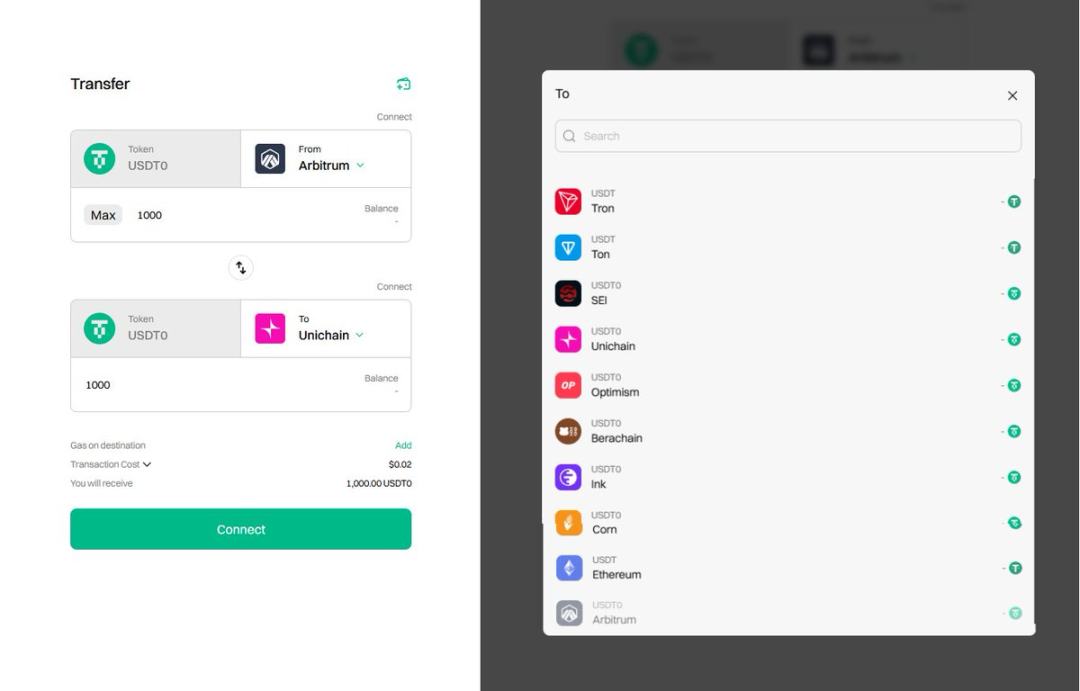Author: 0xTodd Source: X, @0x_Todd
Isn't Uni going to restart liquidity mining on April 15? This time it involves 12 pools, many of which are $USDT0 related pools. So I'd like to take this opportunity to talk about USDT0.
First of all, what is USDT0?

To put it bluntly, it is a cross-chain version of USDT. The parent asset USDT exists on ETH, and it becomes USDT0 when it crosses the chain to other chains through Layer0.
Those that support USDT0 can also cross each other, such as ETH-Arb-Unichain- Bear Chain -megaETH, etc.

Who is the team behind USDT0?
This is the most Tricky, and it took me a long time to figure it out.
The USDT0 project is the result of the joint efforts of 1+3 parties:
1. It is led by Everdawn Labs;
2.1 The underlying technology used is Layer0;
2.2 It is endorsed by Tether;
2.3 It is endorsed by the INK public chain (which is the chain launched by Kraken).

However, there is no clue on the Internet as to who Everdawn Labs is.
I reasonably suspect that it is Tether’s vest.
This is quite consistent with their tone:
If nothing goes wrong, everyone can enjoy the multi-chain convenience of USDT normally;
If something goes wrong, it is Everdawn Labs’ fault and has nothing to do with Tether.
One of the reasons for this speculation is that after USDT0 came out this year, Tether officials immediately expressed support, and then Bitfinex also issued a special article to interpret it. If there is no strong relationship, they (BF and Tether) will not give this kind of support.

How do you evaluate it?
I think if Tether builds this bridge by itself, I think it will definitely be a great achievement, so that USDT of each chain can cross each other without loss, saving the need to use various sand sculpture three-party cross-chain bridges.
However, my trust in Layer0 is limited.
There are many cases of top cross-chain bridges overturning in the past, from multichain to thorchain. There is no threshold for cross-chain technology at all, it is nothing more than multi-signature.
In the past, USDT used the official bridge, not the three-party bridge like L0.
Official bridges are generally safer, but the disadvantage is that liquidity is dispersed.
For example, if you want large funds to cross OP from Arb without loss, then you must go from Arb back to ETH and then to OP. It costs money to go through the three-party faster.
PS: Not to mention the public chain like Sei, which charges fees for entering and exiting the official bridge.
If you use the USDT0 solution, Arb can go directly to OP, without loss, and in seconds.
PS: Of course, there is a historical problem here in OP, that is, the USDT on OP is the old version of the ETH cross-chain version, and it has not been unified with the USDT0, the youth version of the ETH cross-chain version, so Arb cross-OP is nominally feasible, but it is actually useless in the past. This is just an example.
The new public chain, because it supports USDT0 right from the start, has no historical problems, so its availability is much higher.
But!
Tether officials were reluctant to build the bridge themselves, and had to be secretive about sending Everdawn Labs out, which is a bit...
In the past, when I mined $UNI on ETH, I only had to bear two small third-party risks, Tether and Uniswap. Now I have to bear 4 more, namely:
Everdawn should not have any trouble
L0 should not have any trouble
Unichain should not have any trouble
USDT0 supports N other public chains, and each of them should not have any trouble
It sounds a bit confusing.
 Weatherly
Weatherly









